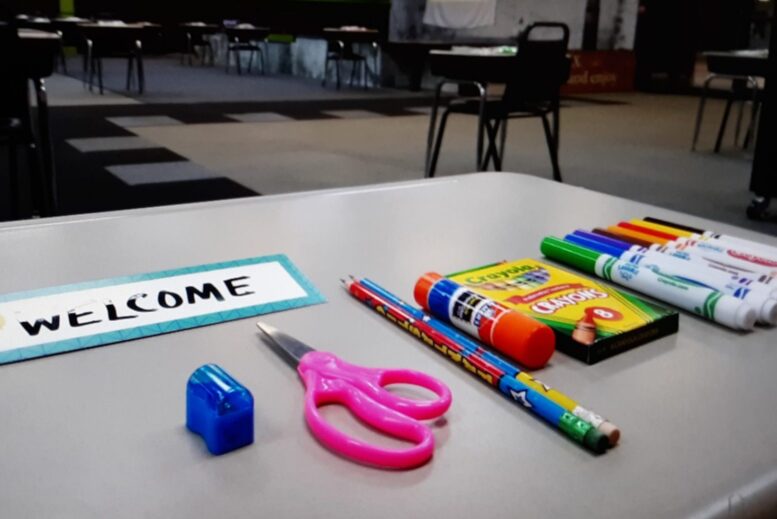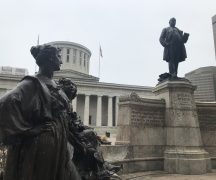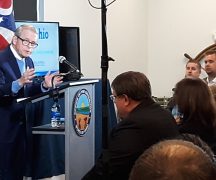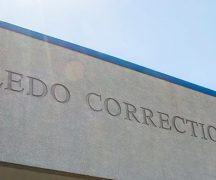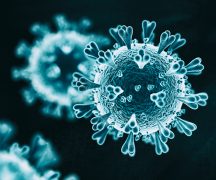WASHINGTON — The Centers for Disease Control and Prevention on Friday released updated guidance to provide educators a science-based plan for reopening K-12 schools.
The agency said it cannot force schools to reopen but can only stress that steps such as wearing masks and physical distancing of at least six feet are key to mitigating the spread of coronavirus.
“CDC is not mandating that schools reopen,” CDC Director Dr. Rochelle Walensky said during a briefing with reporters.
Walensky added that educators should be considered front-line workers in any vaccine rollout. Teachers unions have made similar demands before returning to the classroom.
“We strongly encourage states to prioritize teachers and other school staff to receive vaccinations,” she said.
Walensky said that the agency found that in-school learning can take place when proper measures are taken such as mask wearing and social distancing. The agency also said that frequent hand washing, proper cleaning of classroom surfaces and ventilation, along with contact tracing and available rapid testing, are all steps that schools can take to limit outbreaks.
House Education and Labor Chairman Bobby Scott (D-Va.) said in a statement that in order for schools to implement the CDC guidance, they need funding from the Biden administration’s $1.9 trillion coronavirus relief package. Congress is working to pass the plan and Scott’s committee has included $130 billion for schools to safely reopen.
“Maintaining physical distancing, updating and repairing ventilation systems, purchasing personal protective equipment, and other important safety measures all cost money that schools do not have,” Scott said. “This is particularly true for schools in low-income areas that lacked adequate funding well before the pandemic.”
Similarly, the Department of Education released a handbook to coincide with the guidance released by the CDC.
Walensky said that most COVID-19 clusters that occurred in school settings occurred because there was a breach in wearing a mask.
The CDC stressed that the safest way for schools to reopen is for there to be a low level of coronavirus infection in the community. The guidance uses a color-coding system to recommend if schools should reopen or continue remote learning.
Schools are recommended to open if they are in blue areas, which means there are low transmission rates of the virus, and yellow areas, which means there is moderate transmission.
If the community is in an orange zone, then the CDC recommends that schools implement a hybrid model or reduce attendance. And a red zone indicates that schools should consider virtual learning for middle and high school students.
In red zones, elementary schools can continue with a hybrid learning model, the CDC said.
The recommendations follow President Joe Biden’s efforts to get K-8 students back to in-person learning within his administration’s first 100 days.
In a statement, Biden acknowledged his ambitious goal of reopening K-8 schools and said those schools will need funding to follow the guidance laid out by the CDC.
“To meet these guidelines, some schools will need more teachers and support staff to ensure smaller class sizes, more buses and bus drivers to transport our kids safely, more spaces to conduct in-person instruction, and more protective equipment, school cleaning services, and physical alterations to reduce the risk of spread of the virus,” he said.
At a Friday briefing, White House Press Secretary Jen Psaki said that Biden’s nominee to lead the Education Department will work to reopen schools. Miguel Cardona, a longtime educator is waiting for a full Senate vote for his confirmation.
“When Secretary Cardona is confirmed, you know, this will be his top priority and we will leave it to him and his team at the Department of Education, working in close partnership with the CDC and others, to determine how quickly and efficiently” schools can be reopened, Psaki said.
American Federation of Teachers President Randi Weingarten said in a statement that she felt confident the CDC’s guidance will help schools safely reopen.
“For the first time since the start of this pandemic, we have a rigorous road map, based on science, that our members can use to fight for a safe reopening,” she said.
***
Also from Ohio Capital Journal:
Health department epidemiologist resigns after state discovers 4000 omitted COVID-19 deaths
An epidemiology investigator resigned this week and the head of the Bureau of Infectious Diseases was reassigned after the state health department discovered it undercounted Ohio’s COVID-19 death toll by about 34%.
Karthik Kondapally resigned from the Ohio Department of Health, said Arundi Venkayya, the department’s chief communications officer, in an email Friday.
Likewise, Sietske de Fijter, the former chief of the Bureau of Infectious Diseases, has been reassigned to an unspecified position in the Bureau of Health Improvement and Wellness. She will also no longer serve as chief epidemiologist.
She will be replaced at the bureau by Kristen Dickerson, who previously served as the manager for statewide health, wellness and special programs at the Bureau of Workers’ Compensation.
Venkayya did not respond when asked whether the changes were made in connection with ODH’s announcement this week that a human error reconciling two mortality data sets led to the omission of about 4,000 deaths from COVID-19.
She did not directly answer who will take over as the state epidemiologist.
“These changes are very recent and we are working through the process,” Venkayya said.
ODH Director Stephanie McCloud, herself a recent transplant from the Bureau of Workers’ Compensation, briefed reporters on the death discrepancy Thursday.

